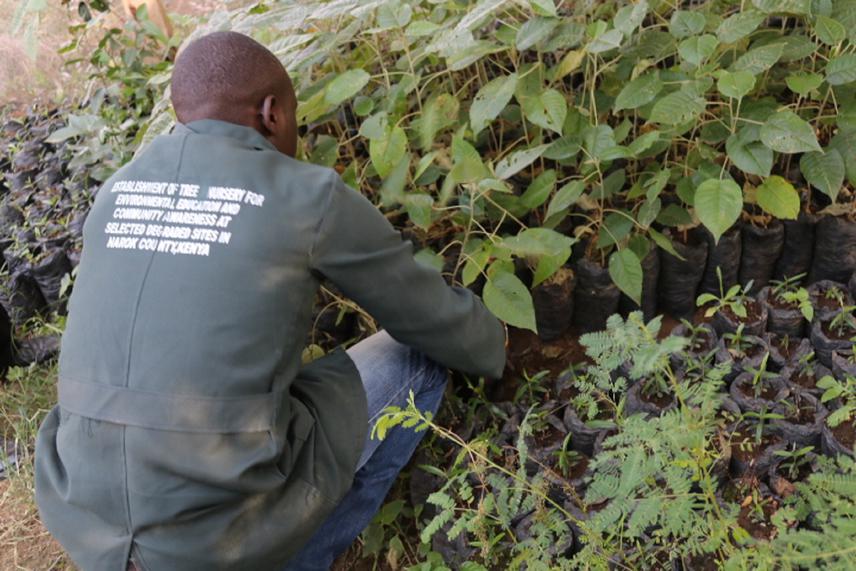Evance Ouya
Other projects
30 Jul 2018
Establishment of a Tree Nursery for Environmental Education and Community Awareness at Selected Degraded Sites in Narok County, Kenya
4 Jul 2023
Enhancing Habitat Rehabilitation through Tree growing, Environmental Education, Community Engagement, and Advocacy in Narok County, Kenya
Climate change is having severe consequences in countries like Kenya. Narok County is facing unprecedented climatic change catastrophes. Climate change impacts are inimical to efforts for improving people’s livelihoods and exacerbate poverty levels. Despite a dearth of efforts to combat climate change, local communities are largely uninformed of possible mitigation measures. Following on earlier efforts, this project will expand and sustain restoration efforts in myriad degraded areas in Narok to mitigating against climate change. We will undertake a robust tree-growing programme, alongside raising public awareness on the need for environmental conservation.
The project will generate seedlings from two nurseries, at Maasai Mara University and Enenkeshui Primary School. We believe that these efforts will create a substantial and long-lasting contribution to nature conservation. In addition, continued sensitization through this project will engender and inculcate long-term conservation values among local communities via mentorship of students, youth, and women groups on environmental conservation.

Changing climatic conditions are envisaged to have serious consequences in developing tropical countries, especially in Arid and Semi-Arid Land (ASAL) countries like Kenya. This contributing to increased food insecurity, poverty, and difficulty in achieving major development milestones such as SDGs. Despite this, some communities are yet to be sensitised and informed on how to mitigate these adverse effects of climate change. Several efforts have been made to rehabilitate degraded sites and restore these habitats, but little has been achieved since such programs need persistence to be significant.
Therefore, this project will seek to address conservation needs for locally threatened and or extinct indigenous plant species through seedling regeneration of such indigenous species. Despite natural regeneration occurring in conserved forests where human activities are limited or prohibited, little attention has been given to other dedicated public lands that could as well be used to increase forest cover to achieve the minimum forest cover of 10% in Kenya.
Through collaborating and forming linkages with other stakeholders, we plan to spearhead and establish Narok County Specific Habitat Action Plans (NCSHAP) that will inform the management and conservation of forests, wetlands, grasslands, and other critical habitats. This will be a critical initiative in establishing grazing management as well as outlawing the sale of timber and its products without permits to achieve sustainability. We believe that in cases where grazing is allowed, it will be after it’s established that it could be sustainable with proper monitoring.
The project mainly involves the generation of seedlings from the two nurseries, at Maasai Mara University and Enenkeshui Primary School. The seedlings will later be grown in dedicated public land, community lands (forests) and designated private lands after community mentorship programmes.
We will make follow-ups and donate playing equipment and education materials to two of the most successful schools. This concept is borrowed from the Toledo Institute for Development and Environment (TIDE) in Belize (TIDE 2010) We are also planning to build the capacity of at least one individual in every Sub-county as Environmental Stewards. The environmental stewards will be the contact persons in their respective areas for lobbying community members and will advise and guide planting exercises, including localities for planting trees. We hope that in the future, we will identify and train more Environmental Stewards for a more significant and sustainable impact in the grassroots.